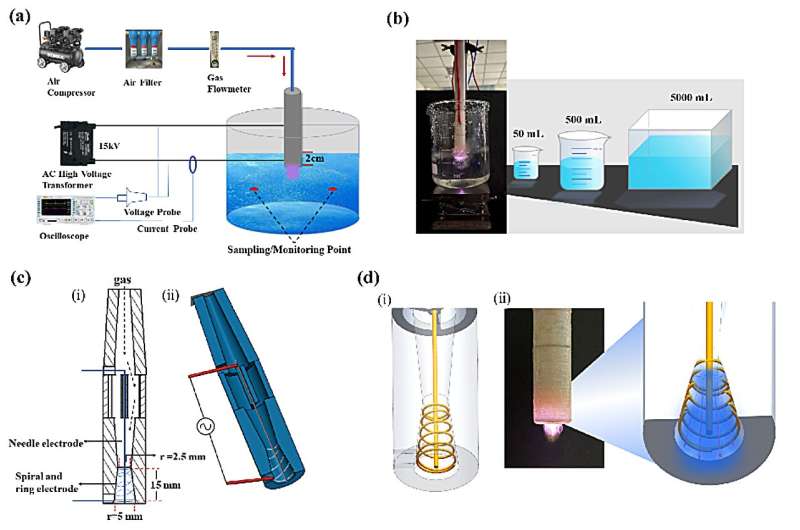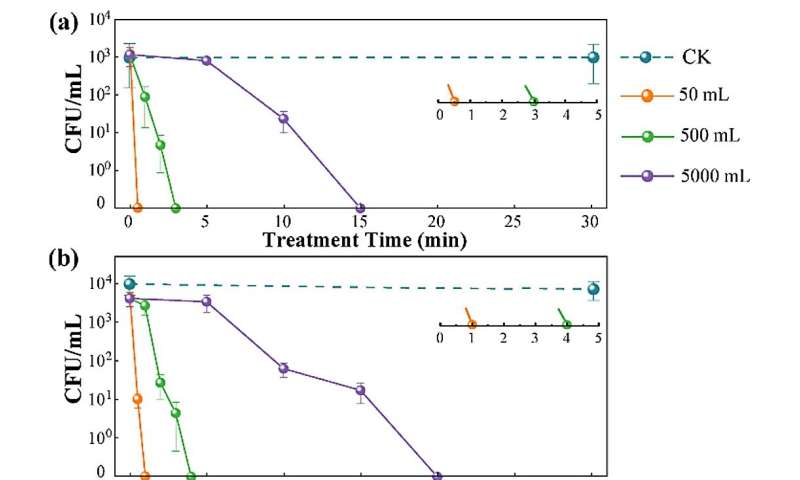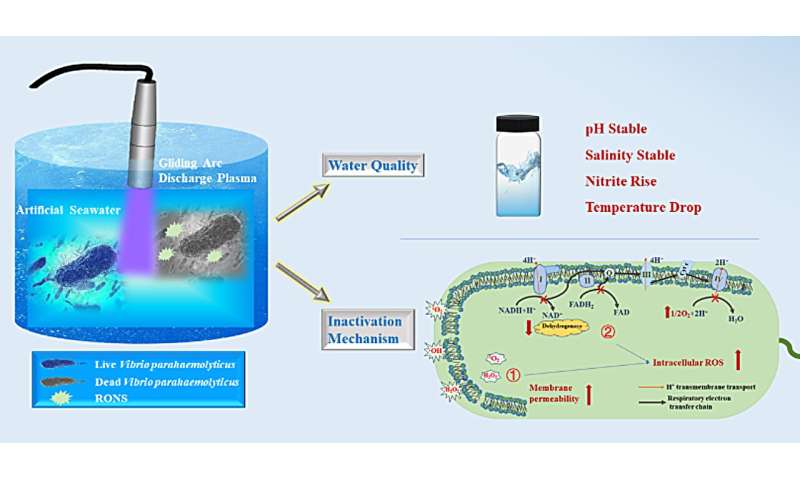This article has been reviewed according to Science X's editorial process and policies. Editors have highlighted the following attributes while ensuring the content's credibility:
fact-checked
peer-reviewed publication
trusted source
proofread
Scientists propose gliding arc discharge plasma seawater sterilization technology for mariculture

Atmospheric pressure plasma technology has demonstrated vast potential in microbial inactivation due to its unique advantages, including no chemical residue, environmental friendliness, high treatment efficiency, low energy consumption and ease of use.
Researchers at the Suzhou Institute of Biomedical Engineering and Technology (SIBET) of the Chinese Academy of Sciences have proposed a strategy to sterilize mariculture utilizing gliding arc discharge plasma (GADP).
They independently developed an air GADP device that can work in seawater with different concentrations of Vibrio parahaemolyticus (VP).
VP is the most prevalent pathogen in intensive mariculture worldwide, posing a significant threat to both the aquaculture industry and public health safety. Currently, antibiotics are the primary means of prevention and control of VP infections in mariculture. However, extensive and overuse of antibiotics inevitably leads to issues such as antibiotic residues in seafood and bacterial resistance.
Optical emission spectroscopy (OES) diagnostics indicate that the GADP is rich in reactive species such as hydroxyl radicals, excited state oxygen atoms, singlet oxygen, and nitric oxide.
In their new study, the SIBET researchers conducted a dose-effect study on the inactivation of VP in varying volumes of artificial seawater using GADP. Results showed that the GADP treatment achieved complete inactivation of VP in a 5000 mL volume within 20 minutes.
Results of the study titled "The effectiveness of gliding arc discharge plasma in sterilizing artificial seawater contaminated with Vibrio parahaemolyticus" have been published in the Journal of Hazardous Materials.
-

The inactivation effect of GADP against VP in 50 mL, 500 mL and 5000 mL of ASW, the concentrations of VP (a)1.0×103 CFU/mL; (b) 5.0×103 CFU/mL; (c) 10×103 CFU/mL. Credit: SIBET -

The potential sterilization mechanisms of GADP in artificial seawater. Credit: SIBET
Moreover, the data of the pH, salinity, temperature, and nitrate content measurements before and after treatment indicate that the GADP has no significant impact on the key water quality parameters of artificial seawater.
The researchers studied the potential sterilization mechanisms of GADP in artificial seawater by examining hydroxyl radicals, hydrogen peroxide, oxidation-reduction potential, intracellular reactive oxygen species, and cell membrane permeability.
This work provides a viable solution for infection with the halophilic pathogen Vibrio parahaemolyticus and demonstrates the potential of GADP in seawater sterilization.
More information: Meng-Ru Du et al, The effectiveness of gliding arc discharge plasma in sterilizing artificial seawater contaminated with Vibrio parahaemolyticus, Journal of Hazardous Materials (2024). DOI: 10.1016/j.jhazmat.2024.135015
Journal information: Journal of Hazardous Materials
Provided by Chinese Academy of Sciences




















